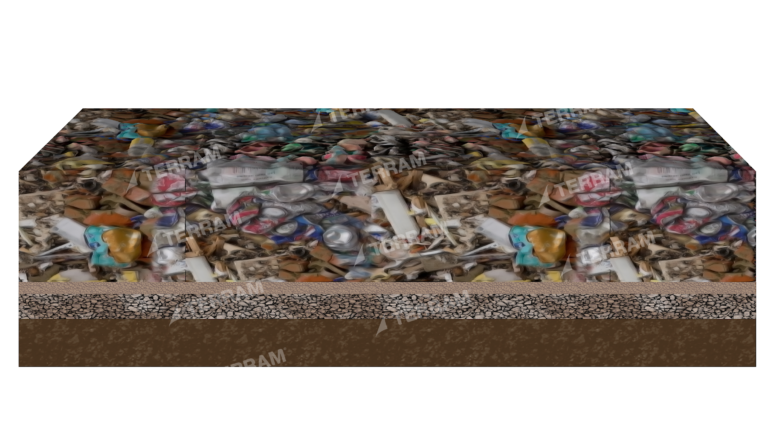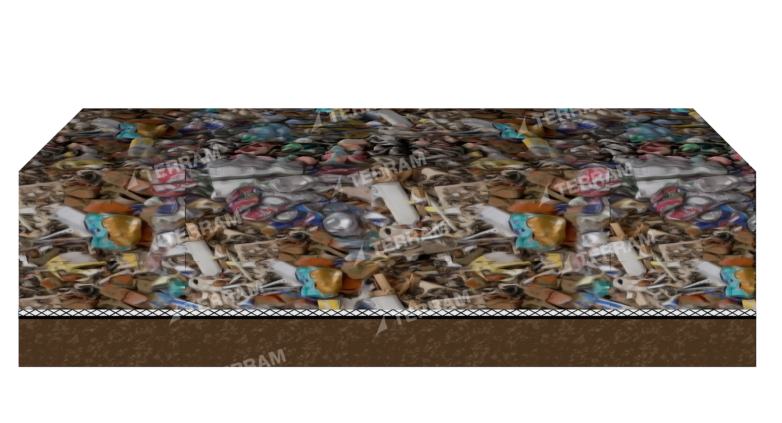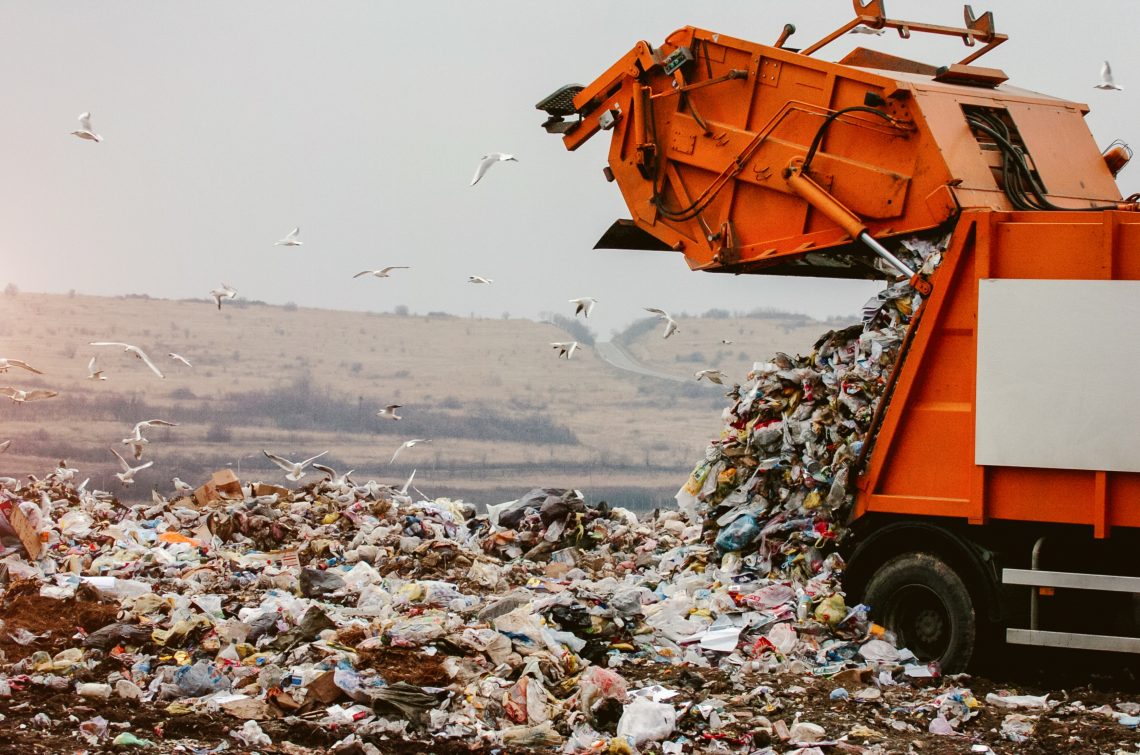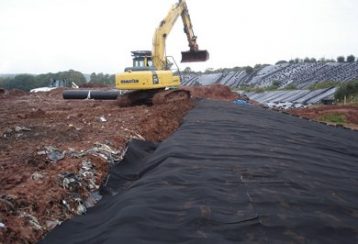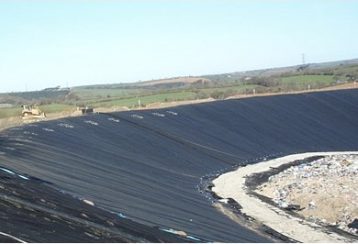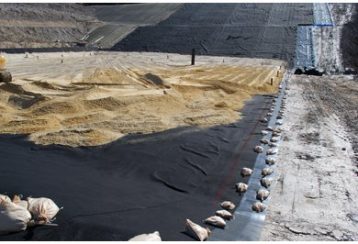Landfill
Drainage

Frequently Asked Questions
What is a Geocomposite?
A relatively thin sheet of two or more materials with a plastic drainage core that provides a high flow path for gas & liquids (usually ground water in Civil Engineering applications). The drainage core is bonded to a geotextile(s) to filter out soil particles and/or a geomembrane on the other side to provide a fluid barrier. Geocomposites are often specified as a value engineered and more sustainable alternative to traditional drainage aggregate.
What is a Geomembrane?
A geomembrane is an impermeable synthetic membrane liner used as a barrier for liquid or gas in both building and civil engineering applications. TERRAM do not manufacture geomembranes although certain TERRAM geocomposite products contain impermeable liners such as TERRAM PW3.1 and 1BZ. TERRAM’s sister company BPI Visqueen (also part of the Berry Global Group) are the UK’s market leading supplier of gas membranes for buildings and offer a wide range of membranes for other applications too.
What is a Geotextile?
A permeable highly durable synthetic fabric general used in Civil Engineering and Building projects such as road and car park construction to stabilise loose soil and prevent erosion. TERRAM geotextiles are highly permeable nonwoven needle punched and thermally treated synthetic fabrics made from polypropylene used to separate, filter, reinforce, protect, or drain engineering soils. Typical uses include preventing intermixing of granular sub-base and subgrade layers, drainage and bedding materials. TERRAM geotextiles help reduce wastage/loss of expensive imported granular materials, improve structural performance and extend the life of the pavement/road/rail track.
What compressive loading will a Terram Geocomposite take?
All TERRAM Geocomposites have been tested with compressive loads between 20 and 200kPa to determine the flow rate capacity in accordance with EN ISO 12958. Flow rates at higher compressive loads are available on request.
What are usual applications for Drainage Geocomposites and what flow rate do I need?
In most civil engineering or building applications the flow rate of ground water is quite low and often referred to as seepage for example back of wall drainage to prevent water pressure building up and pushing on a structure. In the cases of ground water seepage nominal flow rates are required in the drainage Geocomposites. Specialist applications such as landfill cell capping or basal drainage may require higher flow rates, have higher confining pressures due to the weight of fill and lower hydraulic gradients. In these specialist applications the correct grade of Geocomposite drain is selected based upon the anticipated site conditions, the relevant British, European or International design standard should be followed.
What makes Terram Geocomposites better than alternatives?
TERRAM Geocomposites have been installed on numerous projects throughout the UK for decades with a proven track record. The extruded HDPE net drainage core has been designed to withstand extremely high compressive loads with minimal settlement and nearly 100% elastic recovery. Alternative Geocomposites such as those manufactured with cuspated cores collapse without recovery at a specific compressive load (crush) making them more susceptible to site damage during installation. Drainage composites with monofilament cores compress significantly under relatively low pressures which may result in surface settlement and significantly reduced flow rates.
How long will Geocomposites last? (Design life)
When designed, installed and maintained in accordance with the published literature most TERRAM Geotextiles and Geocomposites are sufficiently durable to achieve a design life of at least 100 years in most typical soil conditions. Please refer to DoP (Declaration of Performance) certificates for specific product grades which state the anticipated design life based on independent durability testing.
How do you install and join a Geocomposite?
TERRAM Geocomposites are manufactured in rolls varying from 2 to 4 wide and up to 100m long so are generally installed using mechanical lifting equipment for large areas, smaller rolls or sheets cut from larger rolls can be installed manually. When being used for back of wall drainage the Geocomposites can be held temporarily in place with a variety of fixings prior to backfilling with soil fill. For horizontal applications care must be taken to ensure the ground is flat or has a constant fall with no lumps or undulations to prevent ponding. All TERRAM Geocomposites are supplied with overlap edges which allow butt jointing and can be stapled or taped depending on the site conditions.
Original &
The Best
